The Eclipse of 1919 - Putting Relativity to the Test
August 19, 2016
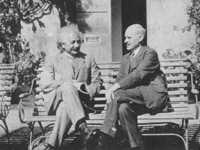
Einstein first formulated the Theory of Relativity and presented it along with his field equations in Berlin to the Prussian Academy of Sciences on November 25, 1915. They state a radical new view of gravity in which gravitationally large objects curve space and time. After years of work, Einstein had finally arrived at a truly general theory of relativity. He described his new equations as "the most valuable discovery of my life."
In England, Sir Arthur Eddington had been receiving whisperings of the new equations from his friends in the field of astronomy and was quite excited about them. He wanted to prove the Theory of Relativity somehow. The task would be reasonably done since Einstein had clear predictions that could be used to test his theory.
One prediction from the new theory was that light would bend as it passed by a large source of gravity, such as the sun. But the sun's intense rays made observing stars extremely inaccurate while they were so close. Luckily a solar eclipse was predicted to occur on May 9th of 1919...
James Cook - His First Voyage
June 14, 2016
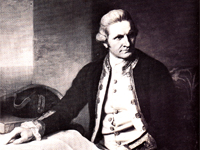
James Cook was a skilled English explorer credited with charting the coasts of New Zealand and Australia, and discovering Hawaii, among other achievements. Cook was employed continuously in the British Navy and his pay was enough to set up a modest home for his wife and children in the Mile End Road in London. He was a full time surveyor and cartographer. His charts were regularly available from publishers in London.
Cook was born in Yorkshire, England in a town along the east coast. He is a quiet and capable man who has the ability to rise up to problems and somehow come away from them with much more than is expected. But acknowledgment and promotion come slowly to those who are quiet and capable. And so it took James Cook until the age of 40 to be promoted to lieutenant by the Royal Society for yet another ship to be sent to the Pacific...
A History of Personal Wealth
March 20, 2016

Much attention is paid these days to the economic growth of our modern economies and the resulting growth of individual wealth. There is no shortage of theories as to what causes this growth or what hinders it. But the track record of this growth of personal wealth is far less debatable.
Scottish economist Angus Maddison was one of the first to notice a startling discontinuity in economic growth around 1820. Among his findings were a doubling of average life span, a near quadrupling of education levels, and the rapid disappearance of illiteracy, all in the four decades before World War I. His most notable finding was that before 1820 economic growth was essentially nonexistent, and after, explosive and sustained.
To start off lets take a look at per capita GDP in America adjusted for inflation. This is the amount of wealth available to each and every individual in terms of 1998 US dollars. You can see how closely growth matches the 2% per year average...
The Christmas Truce of 1914
December 23, 2015
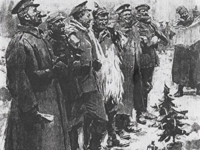
Spontaneous peace and goodwill between soldiers in opposing armies occur in all wars. At least since Troy, chronicles have recorded a pause in fighting to bury the dead, pray, negotiate peace, or to give a moment for soldiers to show respect to their enemies. However none had occurred with the scale or duration, or with the potential to change things, as that of the Christmas Truce of World War I.
Since Germany's declaration of war on August 1, 1914, hundreds of thousands of lives had been lost. An appeal for a ceasefire from Pope Benedict XV only weeks after the war had broken out was immediately rejected by leadership on both sides as "impossible." The war slogged on with soldiers dying endlessly in brutal trench warfare.
Both sides thought that the war would be over quickly. But Christmas was fast approaching with no conceivable end to the conflict in sight...
Dona Nobis Pacem
December 17, 2015
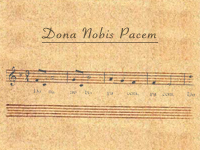
Of all the songs ever written, the simple ones can be some of the best. "Dona Nobis Pacem," which means 'Grant Us Peace,' is one such song. The song's simple but powerful message is still very relevant in today's world.
The origin of the song is not definitively known. It is sometimes attributed to Mozart but the source is usually listed as "Traditional" in most musical texts. While is is a beautiful piece, from an academic standpoint is is not very well written. This likely means that the hymn has its origins in folk music. Our best guess is that it is an old Christmas song written in the 16th or 17th Century by an unknown composer in Germany. It has long since been widely used in several other European countries.
Chivalry
November 2, 2015
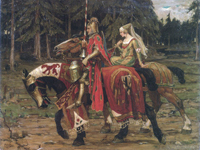
Chivalry generally refers to a code of ethics adhered to by knights during the Dark and Middle Ages in Europe. Duty and honor were foremost among the personality traits that were most valued and admired.
During these times, it took a great deal of cunning and self preservation measures to survive a world of shifting loyalties. Dukes, barons, and other nobles took advantage of the general chaos to strengthen themselves by any means they could.
Kings as a rule had to be constantly on guard for any conceivable threat to their position of power. In these dangerous times, kings and barons strengthened their households by hiring bands of soldiers sworn to loyalty only to them. These men were equipped at their king's expense with armor and weapons and also wore the crest of the king they served.
In time these men came to be known as knights. Their strong morals, military traditions, and strict code of behavior soon became the stuff of legend...
The Battle of Tours - 732 AD
August 7, 2015
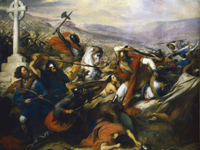
Charles Martel was a ruler of the Carolingian Frankish Empire in the early 8th century AD. The empire encompassed the territories of much of modern day France, western Germany, Switzerland, as well as Belgium and the Netherlands, and was the dominant Christian power in Western Europe at the time. Having won a civil war between two competing kingdoms in 724, Charles had secured his position as head ruler of the entire Carolingian Empire, but had not yet been granted the title of King.
Although he was constantly repelling Saxon and Bavarian armies, as well as other threats, the empire was for the most part secure. Charles supported St. Boniface and other missionaries in their efforts to convert all remaining German tribes to Christianity as a way of uniting his region. The European continent was slowly becoming more prosperous and stable. But a new threat had begun working its way towards the heart of Western Civilization 100 years prior to Charles' rule.
Johannes Kepler - Discovering the Planets' True Motion
July 12, 2015

Johannes Kepler was a brilliant mathematician who is credited with discovering the true nature of the planets' motion around the sun. He was born on December 27, 1571, in Weil-der-Stadt, near Württemberg in the Holy Roman Empire, which is present day southwest Germany. The eldest child in a very poor Protestant family of seven children, his childhood was not an easy one. He was a sickly child who was struck by smallpox at the age of six and would suffer ill health throughout his life. His father, having no trade, became a mercenary and went off to fight Protestant insurgents in the Netherlands, rarely returning home.
Kepler's family was so poor that had he lived in any other part of Europe he would have almost certainly not received any education. He was very fortunate, as was the field of astronomy, that a new mode of education had been introduced by the Dukes of Württemberg, who had embraced the Lutheran doctrines. They set up a system of scholarships for poor but gifted children from Protestant families...
Western Civilization prior to World War I
May 25, 2015
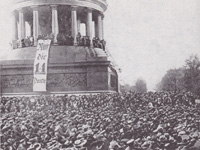
The dominant mood in Western Civilization prior to 1914 was one of pride in its heritage, and confidence in its future progress. Advances in science and technology, as well as art and culture, the rising standard of living for all classes, the spread of democratic institutions, and a position of power and influence in the world all contributed to a sense of optimism. Furthermore, Europe had avoided a general war since the defeat of Napoleon in 1814. And the great powers had not waged war on one another since the Franco-Prussian War in 1870.
Over the past 2000 years, Western Civilization had risen to become an advanced industrial civilization spreading democracy and individual freedoms, as well as sharing a vast amount of technology and culture over the entire globe. It was consistently leading the world away from despotism and towards a culture that highly valued the individual. Per capita GDP broke away on a dramatic rise starting around 1820 as a result of the industrial revolution. Advances in transportation and communication were spreading people and ideas across the entire planet...
The Bedrock of New York City
April 8, 2015

New York City was one of the earliest European settlements in North America and has long been the largest city in the United States. In 1925 it became the first city in the world to obtain a population of over 10 million people. It was in the 1920's that new technology became available that allowed the construction of buildings over 50 stories tall.
These new buildings were constructed differently than those that typically preceded the building boom of the 1920's and 30's. Skyscrapers of this new era were constructed like the cathedrals of old Europe, with the interior columns carrying all of the load, and the walls only acting as curtains.
The construction of sky scrapers in New York City began in downtown, around Wall St. at the lower end of Manhattan Island, but soon spread north. Here's where things begin to get a little more interesting. New skyscrapers were not being built close to downtown, but rather were mostly being constructed in midtown, 4 miles north.
Roman Emperor Constantine's conversion to Christianity
March 15, 2015

Constantine is the first Roman Emperor to convert to Christianity. He did so after witnessing the sight of a cross in the sky along with his entire army. However, his spiritual growth and eventual conversion did not happen at once with this one dramatic event. It began years before this while he was stationed in Gaul along the Rhine frontier.
As Constantine contemplated the imminent outbreak of war with Emperor Maxentius in the Spring of 312, he was greatly worried. Maxentius had an experienced army he had lead to many victories. He controlled a series of well fortified cities in northern Italy, and had been improving the already significant fortifications of Rome for years.
He decides to invade the Italian peninsula from Gaul. This is no easy task, as he must maintain an elaborate supply chain for his army while leaving behind some troops to defend the Rhine frontier while he is gone. This left him with forces much smaller than that of his enemy. Constantine decides to cross the Alps into the Italian peninsula near Mt. Cénis.
The Family Tree of J. S. Bach
February 5, 2015
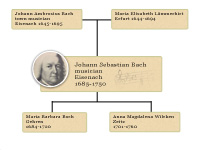
While it is difficult to give any one definitive reason for the achievements of individuals in the Bach family, there certainly are many factors which worked in their favor. Most notably they all possessed a determined spirit that thrived on adversity. And so it happened that during one of the most tragic periods of German history that the Bachs were able to accomplish outstanding musical achievements. The strong solidarity of their family ties were incredibly helpful as well. Also, they often married women who were themselves descendants of musical families, mixing the creative talent of many sources.
Among J. S. Bach's close relatives there were some very talented composers. However his own father did not exhibit any creative gifts, and this was probably true of his grandfather, Christoph Bach, as well. Therefore it seems as though the musical talent inherited from his father's side accumulated in two generations before bursting forth.
Although Bach's mother died when he was 10 years old, she was still a very important influence on him. The importance of his mother's family is shown by one fact in particular...
Eratosthenes - Measuring the Circumference of the Earth in 240 BC
January 23, 2015
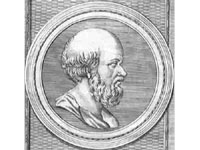
Eratosthenes was a Greek scientific writer, astronomer, and poet, who is credited with making the first approximation of the size of the Earth for which any details are know. He was born in Cyrene, Libya c. 276 BC. After studying in Alexandria and Athens, he settled in Alexandria around 255 BC and became director of the Great Library there.
In the town of Syene (now Aswan) in Egypt, it was well known that at noon on the day of the Summer solstice, light from the sun would shine directly down a local well. One could look down the well and see his or her own shadow at the bottom, but no shadow from the sides of the well. Eratosthenes found it curious that this never happened at any day in Alexandria. And so he was acutely aware that there was something to be learned from this phenomenon. He began to observe the distance of a shadow caused by a very tall tower in Alexandra. He noted that in Alexandria at the same time, during the same day, sunlight fell at an angle of about 7.2 degrees from the vertical. Eratosthenes records this angle to be "a fiftieth of a circle", as measuring angles in degrees had not yet been adopted from the Babylonians at this point.
Silent Night - The Birth of a Christmas Carol
December 10, 2014
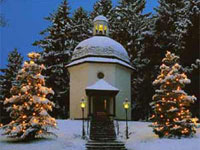
In 1792, Joseph Mohr was born into less than well off circumstances in the Austrian city of Salzburg. His mother was unmarried and his father had deserted her before Joseph’s birth. His mother worked hard to make sure her son received a good education, and soon a local priest took Mohr under his wing. The priest encouraged Mohr’s natural musical talent and made sure that he received an education. Mohr studied at a Benedictine monastery starting in 1808, began seminary school in 1811, and by 1815 he had been ordained as a priest.
In 1816, Mohr was working as an assistant priest in the town of Mariapfarr, 75 miles South of Salzburg. During his time there, he writes a poem describing the birth of the baby Jesus. He files the poem away with his things and goes on about his duties at the church. The following year, poor health forces him to return to Salzburg. Mohr recovers and in 1818 he takes another job as an assistant priest at the Church of St. Nicholas in Oberndorf, Austria, a small town about 10 miles North of Salzburg.
The Pilgrims
November 18, 2014
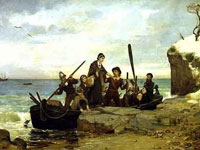
The Pilgrims were a group of English citizens who chose to separate from the church of England and practice Christianity freely. Much of what we know about their journeys is taken from William Bradford’s Of Plimoth Colony and Mourt’s Relation. Bradford was himself a member of the Pilgrims, and so his writing is an eyewitness account of the events and decisions that shaped their destiny.
In England during the early 1600’s, King James ruled over the church of England. Those who chose to separate from his rule faced almost certain persecution, imprisonment, and sometimes even death. The Pilgrims (separatists) saw James’ rule over the church to be corrupt and not in keeping with the teachings of the Word of God. They began to meet in secret to study the Bible and worship God together in a manner that they believed to be right and holy. After enough persecution and secretive worship, they decided that it was time to leave England in search of a new land where they could practice their religious beliefs freely.
In 1608 they were exiled from England to Holland for 12 years. At first they arrived...
Romantic - The History of a Word
November 1, 2014
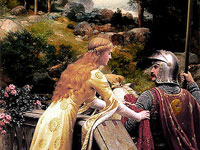
The use of romantic in English goes back to the seventeenth century when it was used to describe imagination and inventiveness in storytelling and also to characterize scenery and paintings. The word romantic, obviously, comes from the word romance. A romance originally was a type of story that was written in a romance language. That is, the languages that developed as offspring of Latin in areas that had once been Roman provinces. From these languages came French, Spanish, and Italian, among other romance languages.
Since these stories were largely written about love and adventure, the word romantic became associated with them over the years. Furthermore, since these stories were usually set in a scenic area, the phrase 'romantic spot' became associated with beautiful settings as opposed to those that were ugly or common. In modern French the word for novel is still roman, while in English a romance is a type of novel.
The Origins of Halloween
October 21, 2014
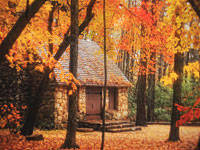
Halloween began long ago as part of the Celtic new years festival. The tribes of people we now call Celts lived in Ireland, Britain, and Northern France about 2500 years ago. Their festival marked the end of Summer and the coming of the dark and cold winter months. According to their calendar, the year began on a day corresponding to November 1 on our present calendar. This date marked the beginning of winter. The Celtic people worshiped gods and spirits of nature. Their festival was a time to be thankful for their harvest.
The Celts called this festival Samhain (SAH-win), which means "The end of Summer." Samhain was celebrated during the three days of the full moon near the end of October. To symbolize the end of the Summer months, all fires in people's homes were put out. Then later, Celtic priests, called Druids, created a new fire for the new year in a public place. Villagers would carry hot embers from the community fire back to their homes to relight their own fires.
The Celts believed that during this time when their fires were out...
Earth - A Pale Blue Dot
October 16, 2014

On September 5, 1977, the Voyager 1 space probe was launched by NASA from the Cape Canaveral Space Launch Complex in Florida. It flew by Jupiter on March 5, 1979, followed by Saturn on November 12, 1980. At the request of Carl Sagan, on February 14, 1990, NASA engineers turned the space craft around in order to take the first ever 'portrait' of the solar system as seen from the outside. A series of pictures were taken of the sun and the planets using Voyager 1's cameras. Narrow-angle images of Earth, Venus, Jupiter, Saturn, Uranus, Neptune, and the sun were acquired as the spacecraft built the wide-angle mosaic. Between February 14, 1990 and June 6, 1990, Voyager 1 returned 60 frames back to Earth. One picture at first glance is mostly dark and appears to show nothing at all. But upon a closer look it is a much more dramatic photo. If you look closely, you can see a tiny speck of light. That speck is Earth, as seen by Voyager 1 from about 4 billion miles away.
The late astronomer Carl Sagan eloquently tried to express how he felt about this photo in his book Pale Blue Dot:
The Rise of Cities
October 11, 2014
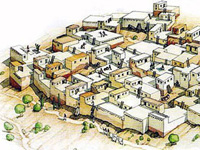
Nearly all humans in the modern world live in some kind of a permanent residence. But it hasn't always been like this. Our species started out as hunter gatherers and began to make permanent settlements mostly due to the rise of agriculture. Only 3% of the world's population lived in cities in 1800. Since then we have urbanized our existence more and more.
Archeological evidence indicates that domestication of various plants and animals began around 12,000 years ago, starting the Halocene epoch. However the Neolithic Revolution involved societies radically altering their natural environment by means of deforestation and irrigation for the propose of food crop cultivation. This required societies to spend nearly all of their time and resources in one location. The conventional view holds that cities first began to form after the Neolithic revolution, around 5,500 BC. The earliest know permanent human settlement is Sumer is present day Southern Iraq. It was settled between 5500 and 4000 BC.
Nailing down a date for the initial founding of a city can be somewhat tricky. As with...
Tambora Volcano
September 6, 2014
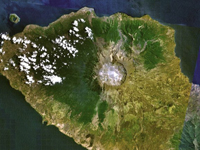
Just before sunset on April 5, 1815, a massive explosion shook the volcanic island of Sumbawa in the Indonesian archipelago. For two hours, a stream of lava erupted from Mount Tambora, the highest peak in the region, sending a plume of ash eighteen miles into the sky.
More than eight hundred miles away, Thomas Stamford Raffles, the lieutenant-governor of Java, heard the blast at his residence and assumed it came from cannons firing in the distance. Other British authorities in the region made the same mistake. Fearing a neighboring village was under attack, Raffles dispatched troops to find and repel the invaders.
240 miles North of Tambora on the southwestern tip of Sulawesi, the commander of the Benares, a cruiser of the British East India Company, reported "a firing of cannon." The explosions appeared to come from the South. As they continued, "the reports seemed to approach much nearer, and sounded like heavy guns occasionally, with slighter reports between." Assuming that pirates were in the area, the Benares went to sea and spent the next three days...
J. S. Bach - Years of Growth (1702-1706)
August 2, 2014
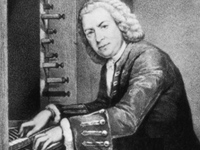
By Easter 1702 Sebastian had finished his studies at Michaelisschule and was ready for a University. Attending any worthwhile university without funds would have been quite a challenge for most young men, but not too much of a problem for such a determined youth as Sebastian. But he did not seriously consider studying at a University. He was most eager to begin musical work in earnest and felt ready for any position that might come his way. Later in life he might have regretted this decision, as in 18th century Germany attendance at a University made a tremendous difference in a musician's standing both socially and economically. It was for this reason that he would later insist that his sons attend a University, even though he was confident they would choose a musical career themselves.
But as a youth of 17 years Sebastian was not quite so farsighted. And there was no one in his life at the time to give him any such advice. Where to look for suitable employment was the main focus that arose at this point in his life. Significantly, he did not consider staying in Northern Germany. Advancing his career would have been much more expedient had he done so, as he...
Landwasser Viaduct
June 21, 2014
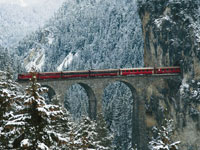
The territory of Switzerland has many large areas that are covered with enormous mountains. Before the 19th century, this terrain made it very difficult to travel across the country. In addition to its challenging terrain, cold winters often create frequent and deep snowfall. Although beautiful, this makes travel of any kind quite a challenge.
The Swiss railway engineers of the nineteenth and twentieth century had to be creative, innovative, and downright courageous to build a railway network as complex as required by the country's mountainous geography. A major limitation of rail transport is its sensitivity to grade changes. As such, engineers had to plan and construct many bridges and tunnels to cross rivers and canyons and to pass through mountains in order to keep railways as level as possible.
One of the most impressive feats was the construction of the Landwasser Viaduct on the Albula railway near Filisur village. It is a perfect example of the combination of bridge and tunnel construction so common throughout the country of Switzerland. Completed and operational...
J. S. Bach - His early life
June 2, 2014
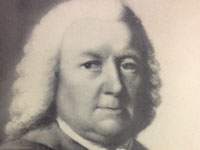
This is the first of many articles about the life of Johann Sebastian Bach. After which there will be more to follow chronicling the lives of his many gifted family members. The legacy of this remarkably talented family ranges for more than two centuries from the sixteenth-century miller Veit to Wilhelm Friedrich Ernst (1759 - 1845), Johann Sebastian's grandson. All totaled seven generations of musical genius. But for now we will start with the early adventures in Sebastian's life...
Inside the Georgenkirche church in Eisenach, Germany there stands a baptismal font erected in the year 1503. This relic, which still stands today after much repair following WWII arial bombardment, has been the site of many significant events through the centuries. It was on March 23, 1685 that the town musician Johann Ambrosius Bach had a son baptized under then name of Johann Sebastian. Pastors of this church still to this day refer to this event whenever a baby is christened here. Of the two godfathers, one, the town musician Sebastian Nagel, came all the way from the city of Gotha. The other, Johann Georg Koch, was a forester in Eisenach.
Caradoc - Hero of ancient Britain
May 22, 2014
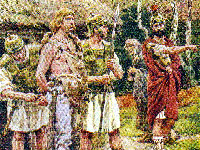
Many years ago, the island nation currently known as England was a much more primitive place. Some of the oldest literature about this part of the world is written by Celtic tribal peoples and by the immortal Roman historian Tacitus.
At this time the Angle, Saxon, and Jute tribes had not yet moved onto the island. It was inhabited by an ancient people called the Britons. The land was covered with swamps, fields, and great forests. Dangerous wild animals roamed the island freely, as well as wild cattle.
The Britons lived in huts built from sticks and mud. Sheep and horses were stockaded within small tribal villages. Ditches were dug around these settlements to protect the villagers from both man and beast. For these wild people had made a tradition out of fighting each other.
The Britons had predominantly blue eyes, and many accounts by Romans remarked at how common red and blonde hair was among those who inhabited the entire island. The Britons wore skins from local animals they routinely hunted, especially during the snowy winters...
Sewanee Memorial Cross
May 1, 2014
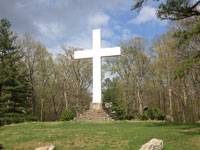
The Sewanee Memorial Cross sits in a wooded area on the edge of a bluff on the campus of The University of the South in Sewanee, Tennessee. Sitting on the Cumberland plateau overlooking the Franklin County valley, it was constructed in August 1922 as a memorial to all who died in "The war to end all wars." Today it not only serves as a reminder of those who died in WWI, but for all from Franklin county who have died in wars since then.
To visit the cross one starts at the University and travels down Tennessee Ave. As the cross grows nearer it appears directly in the middle of the road. The road dead ends here with a loop around the cross. A beautiful place day or night.
There are many plaques commemorating these wars. The text for each plaque at the base of the cross reads:
WWI
To the sons of Sewanee who answered their country's call to service in the World War 1917-1918
Berchtesgaden
April 23, 2014
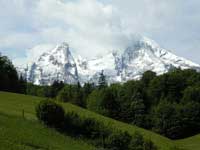
Berchtesgaden is a beautiful land located in the extreme Southeastern tip of Germany in the Bavarian Alps. This small town is surrounded on all sides by a wealth of pristine streams, meadows, and forests, all nestled within snow capped mountains. There are only a few roads and one rail road track that all dead end in this valley. Berchtesgaden truly is surrounded by mountains on all sides. With the most prominent peak being the Watzmann to the South as shown in the image to the left. Being a small town, it does have a permanent population. At the same time it is a national park in Germany, attracting 1.3 million visitors per year. Berchtesgaden is so much more than just a tourist attraction. It has a rich history that includes kings, writers, musicians, and many stories from WWII.
Salt mines were opened here in the 12th century, making the region more prosperous and beginning many centuries of rivalry with the present day Austrian towns of Hallein and Salzburg, also know for their numerous salt mines.
Starting in 1300 AD the town was ruled by monks from its Augustinian abbey. These monks...
Classic Proverbs
February 1, 2014

Hunger is the best sauce.
Plan the work, work the plan.
If the shoe fits, wear it.
If wishes were horses, beggars would ride.
Let sleeping dogs lie.
Look before you leap.
Make hay while the sun shines.
What goes around, comes around.
All that glitters is not gold.
Where there's smoke, there's fire.
As you sow, so you shall reap.
Bad news travels quickly.
One rotten apple spoils the barrel.
Better late than never.
Sign up for email updates.
Welcome new readers!
In a hope to share any interesting historical stories I come across in the future I will be writing and posting articles whenever I can. Hopefully quite often.
I'll also be keeping you up to date on any good reads I come across in the Recommended section.
Looking for something in particular? Find it more quickly on the Search page.
And here is a complete list of all articles since the beginning.
Recent Articles
The Battle of Lepanto - 1571
God Rest You Merry Gentlemen
The Druids
The Gartan Mother's Lullaby
Earth's Axial Precession
Bronze Age Civilization Collapse
Winterfylleth (Ƿinterfylleþ)
David Livingstone
Jettying - Unique Architectural Style
Good King Wenceslas
The Christmas Star
Captain Henry Morgan
Indo-European Migration
The Siege of Paris - 1870
European Forests









